
A Circadian Clock Protein Regulates Fitness under Water Limitation
Plant Physiology, Plant Physiology: On The InsideThe circadian clock of plants coordinates many molecular, physiological and metabolic processes to optimize the plant's health and survival in an ever-changing environment. The core circadian clock component TIMING OF CAB EXPRESSION1 (TOC1) integrates environmental stress responses in plants through…

Systems Analysis of Lignin Mutants
Plant Physiology, Plant Physiology: On The InsideLignin is a complex polymer deposited in plant cell walls that provides mechanical support and facilitates the transport of water and solutes through the vascular system, and aids in plant defense. Lignin waterproofs plant cells by providing a hydrophobic environment by chemical bonding with cellulose…

Camelina: A History of Polyploidy, Chromosome Shattering, and Recovery
Research, The Plant Cell, The Plant Cell: In BriefFollowing formation of a polyploid plant, cells need to manage issues such as gene dosage and chromosome pairing/segregation to help the formerly separate genomes get along in the same nucleus. As the genomes adjust, chromosomes may undergo recombination, rearrangements, gene loss, and other perturbations,…
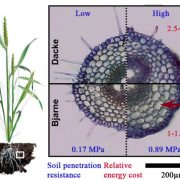
Burying your head in the sand: heading belowground to find future targets of selection in roots
Plant Physiology, Plant Physiology: News and Views, ResearchAuthor: Skelton, Robert Paul
[email protected]
Institution: Department of Integrative Biology, University of California Berkeley, Berkeley, CA, 94720.
Burying one’s head in the sand is usually synonymous with avoiding an issue, but in this volume of Plant Physiology Colombi et al. (2019)…
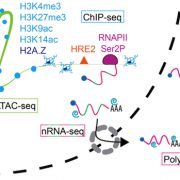
Down the Rabbit Hole: The Hidden World of Gene Regulation Within the Nucleus
Research, The Plant Cell, The Plant Cell: In a NutshellLee and Bailey-Serres uncover multiple aspects of nuclear and whole-cell epigenetic and post-transcriptional gene regulation in Arabidopsis. Plant Cell https://doi.org/10.1105/tpc.19.00463
By T. A. Lee and J. Bailey-Serres
Background: Plant cells require oxygen to generate ATP, similar to our own…
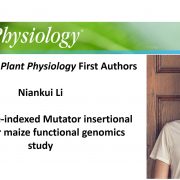
Recognizing Plant Physiology first authors: Niankui Li
Plant Physiology, Plant Physiology: Author ProfilesNiankui Li, co-first author of A sequence-indexed Mutator insertional library for maize functional genomics study
Current Position: Ph.D. Student. Molecular & Environmental Plant Sciences, Texas A&M University, USA
Education: Master of Agronomy, College of Agronomy and Biotechnology, China…
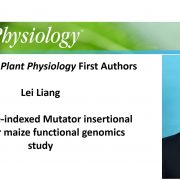
Recognizing Plant Physiology first authors: Lei Liang
Plant Physiology, Plant Physiology: Author ProfilesLei Liang, co-first author of A sequence-indexed Mutator insertional library for maize functional genomics study
Current Position: Ph.D. Candidate. State Key Laboratory of Plant Physiology and Biochemistry, National Maize Improvement Center, College of Agronomy and Biotechnology, China Agricultural…
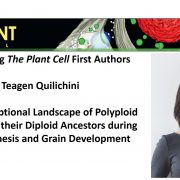
Recognizing Plant Cell first authors: Teagen Quilichini
The Plant Cell, The Plant Cell: Author ProfilesTeagen Quilichini, co-first author of The Transcriptional Landscape of Polyploid Wheats and their Diploid Ancestors during Embryogenesis and Grain Development
Current Position: Assistant Research Officer, National Research Council Canada, Saskatoon, Canada
Education: PhD, Department of Botany, University…
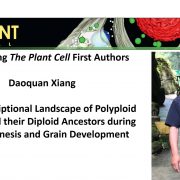
Recognizing Plant Cell first authors: Daoquan Xiang
The Plant Cell, The Plant Cell: Author ProfilesDaoquan Xiang, co-first author of The Transcriptional Landscape of Polyploid Wheats and their Diploid Ancestors during Embryogenesis and Grain Development
Current Position: Research Officer, Principal Investigator, National Research Council Canada
Education: Ph.D in Plant Genetics and Breeding from…

